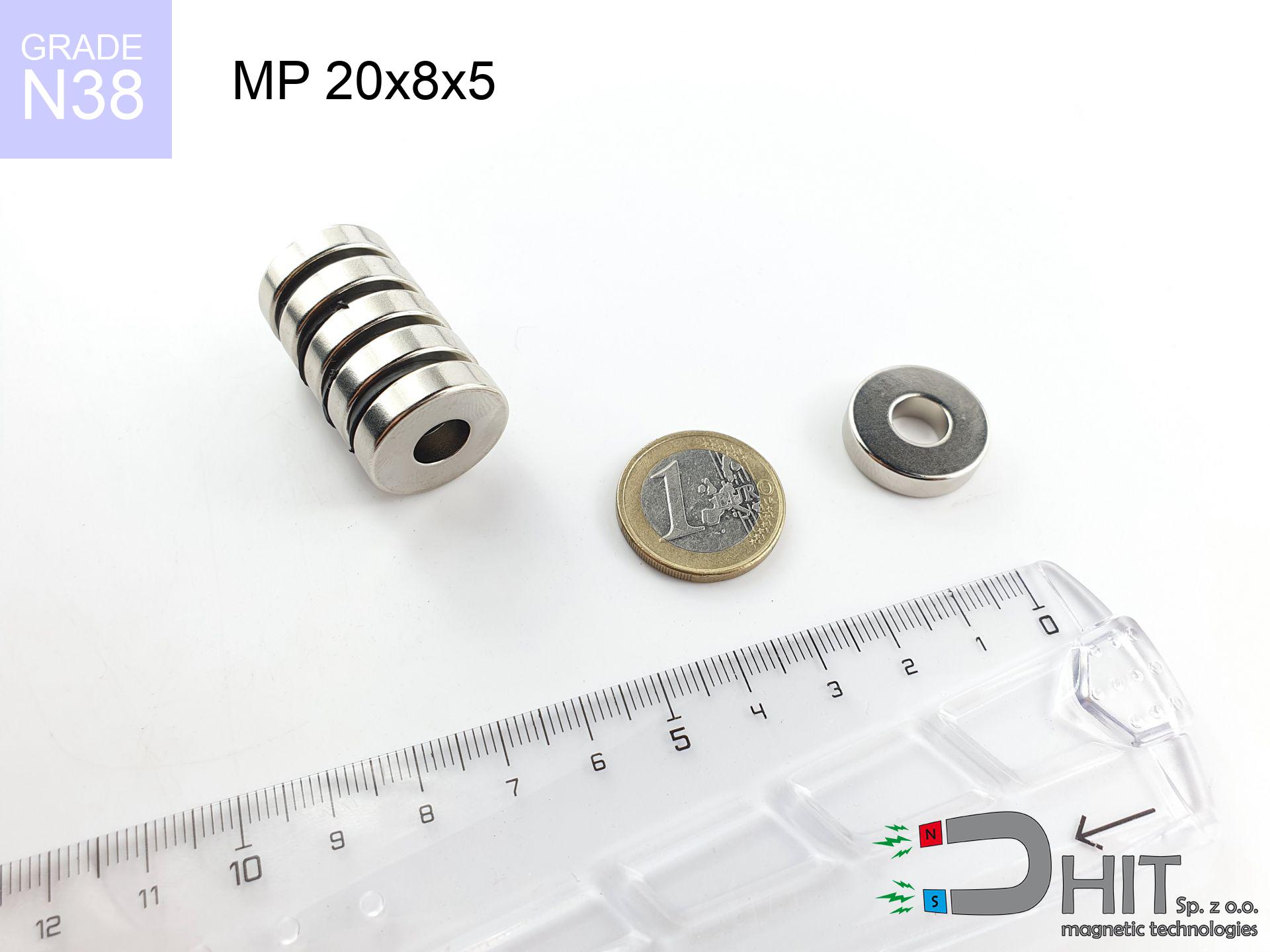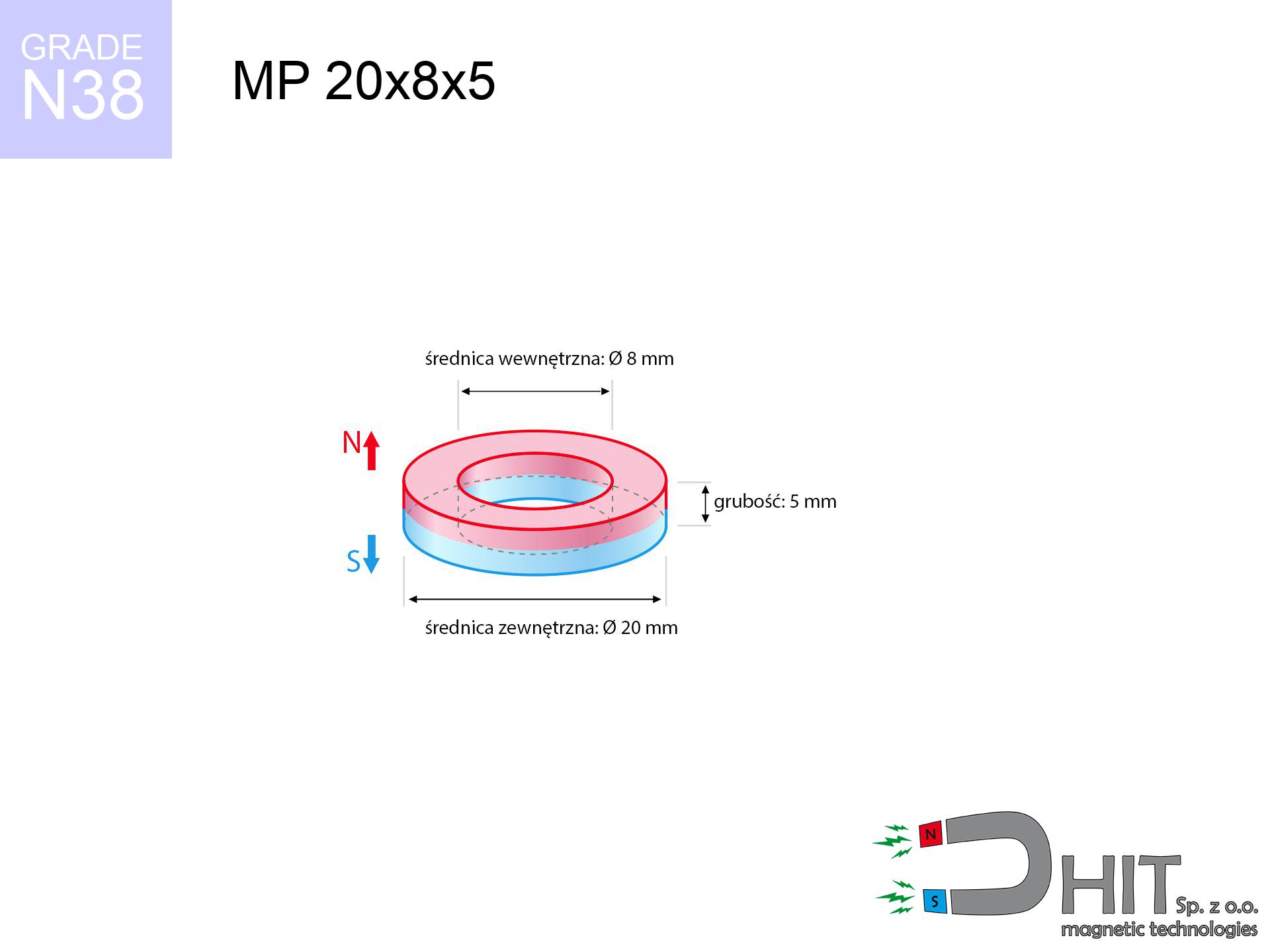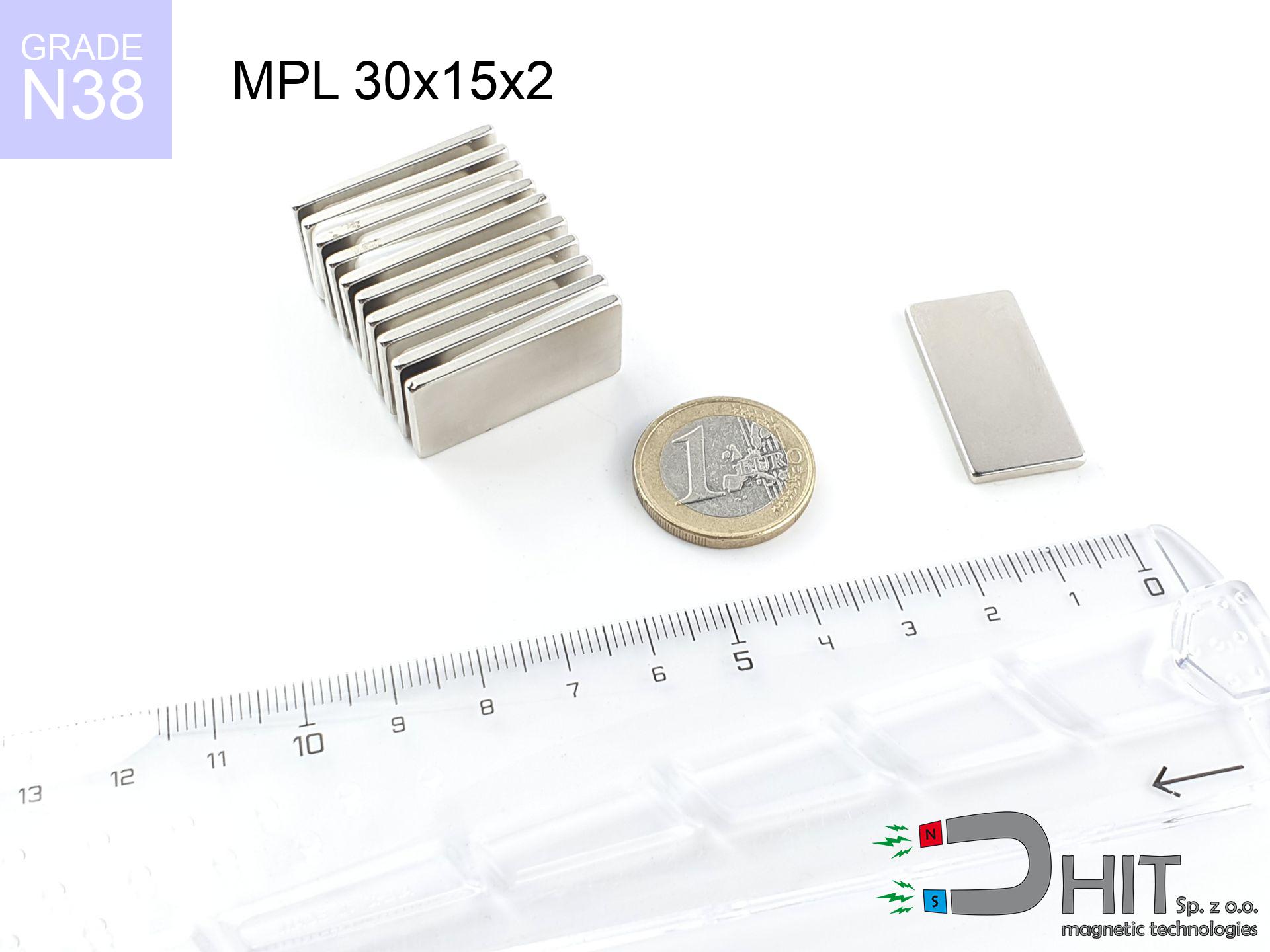MP 20x8x5 / N38 - ring magnet
ring magnet
Catalog no 030188
GTIN: 5906301812050
Diameter [±0,1 mm]
20 mm
internal diameter Ø [±0,1 mm]
8 mm
Height [±0,1 mm]
5 mm
Weight
14.14 g
Magnetization Direction
↑ axial
Load capacity
2.28 kg / 22.36 N
Magnetic Induction
206.25 mT
Coating
[NiCuNi] nickel
3.44 ZŁ with VAT / pcs + price for transport
2.80 ZŁ net + 23% VAT / pcs
bulk discounts:
Need more?Want to negotiate the price?
Call us +48 22 499 98 98 or write via form on the contact page. Test the magnet's power with our power calculator.
Orders placed by 14:00 are shipped the same day.
MP 20x8x5 / N38 - ring magnet
Magnetic properties of material N38
Physical properties of NdFeB
Shopping tips
Advantages as well as disadvantages of neodymium magnets NdFeB.
In addition to immense strength, neodymium magnets have the following advantages:
- They do not lose their power (of the magnet). After approximately 10 years, their strength decreases by only ~1% (theoretically),
- They are exceptionally resistant to demagnetization caused by an external magnetic field,
- In other words, thanks to the shiny nickel, gold, or silver finish, the element gains an visually attractive appearance,
- They exhibit extremely high magnetic induction on the surface of the magnet,
- Magnetic neodymium magnets are characterized by very high magnetic induction on the surface of the magnet and can operate (depending on the form) even at temperatures of 230°C or higher...
- The ability for precise shaping or customization to specific needs – neodymium magnets can be produced in various forms and dimensions, which expands the range of their possible uses.
- Significant importance in modern technologies – are used in HDD drives, electric drive mechanisms, medical equipment or other modern machines.
Disadvantages of neodymium magnets:
- They can break when subjected to a powerful impact. If the magnets are exposed to impacts, we recommend using magnets in a steel housing. The steel housing in the form of a holder protects the magnet from impacts, and at the same time increases its overall strength,
- They lose strength at high temperatures. Most neodymium magnets experience permanent loss of strength when heated above 80°C (depending on the shape and height). However, we also offer special magnets with high temperature resistance, up to 230°C,
- They rust in a humid environment. For outdoor use, we recommend using waterproof magnets, such as those made of rubber or plastic,
- The use of a cover - a magnetic holder is recommended due to the limited production capabilities of creating threads or complex shapes in the magnet
- Potential hazard arising from small pieces of magnets pose a threat, if swallowed, which becomes significant in the context of child safety. It's also worth noting that miniscule components of these devices can be problematic in medical diagnosis when they are in the body.
Handle Neodymium Magnets Carefully
Dust and powder from neodymium magnets are flammable.
Do not attempt to drill into neodymium magnets. Mechanical processing is also not recommended. If the magnet is crushed into fine powder or dust, it becomes highly flammable.
Keep neodymium magnets away from the wallet, computer, and TV.
Magnetic fields generated by neodymium magnets can damage magnetic storage media such as floppy disks, credit cards, magnetic ID cards, cassette tapes, video tapes, or other similar devices. They can also damage televisions, VCRs, computer monitors, and CRT displays. Avoid placing neodymium magnets in close proximity to electronic devices.
Neodymium magnets are the strongest magnets ever invented. Their strength can shock you.
Familiarize yourself with our information to correctly handle these magnets and avoid significant swellings to your body and prevent disruption to the magnets.
If you have a nickel allergy, avoid contact with neodymium magnets.
Studies show a small percentage of people have allergies to certain metals, including nickel. An allergic reaction often manifests as skin redness and rash. If you have a nickel allergy, try wearing gloves or avoid direct contact with nickel-plated neodymium magnets.
Neodymium magnets are primarily characterized by their significant internal force. They attract to each other, and any object that comes in their way will be affected.
Magnets will bounce and also clash together within a distance of several to almost 10 cm from each other.
Neodymium magnetic are extremely fragile, resulting in shattering.
In the event of a collision between two neodymium magnets, it can result in them getting chipped. Despite being made of metal and coated with a shiny nickel plating, they are not as hard as steel. At the moment of connection between the magnets, small sharp metal pieces can be propelled in various directions at high speed. Eye protection is recommended.
Do not bring neodymium magnets close to GPS and smartphones.
Intense magnetic fields generated by neodymium magnets interfere with compasses and magnetometers used in navigation, as well as internal compasses of smartphones and GPS devices.
Neodymium magnets can become demagnetized at high temperatures.
Although magnets have demonstrated their effectiveness up to 80°C or 175°F, the temperature can vary depending on the type, shape, and intended use of the specific magnet.
People with pacemakers are advised to avoid neodymium magnets.
In the case of neodymium magnets, there is a strong magnetic field. As a result, it interferes with the operation of a heart pacemaker. Even if the magnetic field does not affect the device, it can damage its components or deactivate the entire device.
Maintain neodymium magnets away from children.
Not all neodymium magnets are toys, so do not let children play with them. In the case of small magnets, they can be swallowed and cause choking. In such cases, the only solution is to undergo surgery to remove the magnets, and otherwise, it can even lead to death.
Exercise caution!
To illustrate why neodymium magnets are so dangerous, see the article - How very dangerous are powerful neodymium magnets?.




![UMGGW 43x6 [M4] GW / N38 - magnetic holder rubber internal thread UMGGW 43x6 [M4] GW / N38 - magnetic holder rubber internal thread](https://cdn3.dhit.pl/graphics/products/umg-43x6-m6-gw-hel.jpg)
![UMGZ 48x24x11.5 [M8] GZ / N38 - magnetic holder external thread UMGZ 48x24x11.5 [M8] GZ / N38 - magnetic holder external thread](https://cdn3.dhit.pl/graphics/products/umgw-48x24x11.5-m8-gz-bit.jpg)



